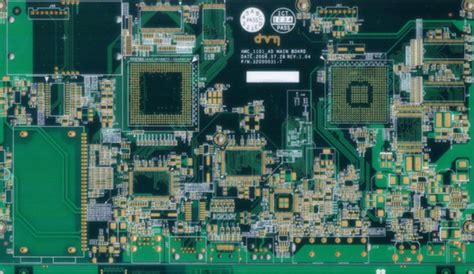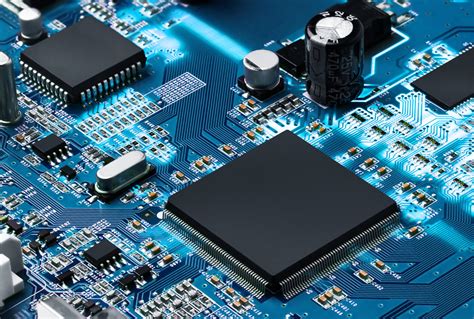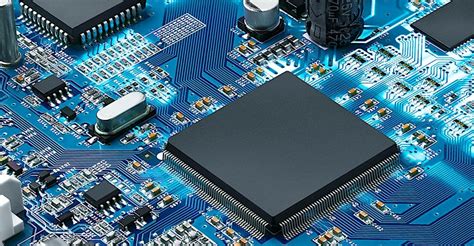Mastering Board PCB Assembly for High-Quality Circuits
Key Takeaways
Successfully navigating pcb assembly is an essential skill for any electronics enthusiast or professional, as it directly impacts the performance and reliability of the final product. Understanding the intricacies of pcba not only ensures that components are assembled properly but also helps in troubleshooting potential issues before they become critical. Key techniques such as optimal component placement can greatly minimize assembly errors and boost overall efficiency in production. Furthermore, employing the right soldering methods is crucial for achieving high-quality connections; techniques like surface mount technology (SMT) or through-hole soldering each have unique benefits that can enhance both durability and electrical performance. While challenges during pcb assembly are not uncommon, familiarizing oneself with potential pitfalls and their solutions can streamline the process significantly. Finally, rigorous testing and quality assurance practices are indispensable in verifying that assemblies meet required specifications, paving the way for improved products and customer satisfaction. By grasping these fundamental aspects of board PCB assembly, you will be well on your way to mastering this vital technology in circuit production.
Understanding the Basics of PCB Assembly
The process of pcb assembly is fundamental to creating reliable and efficient electronic circuits. At its core, pcba involves the integration of various electronic components onto a printed circuit board, enabling them to communicate and function cohesively. Understanding the basics begins with recognizing the different components used in this assembly, such as resistors, capacitors, and integrated circuits. Proper understanding of their specifications and placements can significantly influence the performance of the final product.
Moreover, familiarity with industry standards and guidelines ensures that your pcb assembly meets quality benchmarks. One crucial aspect is to conduct thorough inspections during each phase of the assembly process to prevent defects that might lead to circuit failures later on.
“An ounce of prevention is worth a pound of cure.”
Incorporating this mindset encourages proactive measures like double-checking placements and solder points before proceeding further in fabrication.
Adopting efficient techniques in pcba not only helps in achieving higher quality but also enhances productivity. Emphasizing meticulousness while assembling parts lays a robust foundation for future complexities encountered in more advanced electronic designs. With this grounding, you pave the way for mastering subsequent stages of pcb assembly, ensuring that your circuits operate flawlessly.

Essential Tools for Effective PCB Assembly
To achieve success in pcb assembly, it is imperative to equip yourself with the right tools that enhance efficiency and accuracy. A well-organized workstation with essential instruments not only streamlines the process but also ensures high-quality outcomes. Key tools include:
| Tool | Purpose |
|---|---|
| Soldering Iron | Used for creating robust connections between components and the pcb. |
| Tweezers | Essential for handling small components with precision during assembly. |
| Multimeter | Useful for testing electrical connections and ensuring that voltage levels are correct post-assembly. |
| PCB Holder | Provides stability to the board, allowing for more accurate soldering and placement. |
| Hot Air Rework Station | Ideal for surface-mounted devices, enabling easy removal and replacement without damage to the board. |
By utilizing these critical tools, you set a strong foundation for a successful pcba process. Investing in high-quality instruments not only enhances your productivity but also minimizes the risk of errors, thereby improving overall circuit performance. Each tool serves a specific purpose in the assembly line, contributing to a smooth workflow and ultimately leading to exceptional quality in your final products.

Optimal Component Placement Techniques
Effective component placement is crucial for successful pcb assembly and significantly impacts the overall performance of the final product. To achieve optimal results, one must consider several factors. First, the arrangement of components should prioritize functionality and minimize signal interference. Utilizing a systematic approach, like adhering to a grid layout or following specific design rules, can greatly assist in achieving this objective. Additionally, it is vital to position components with regard to their thermal properties; heat-sensitive components should be placed away from heat sources to ensure longevity and reliability.
Moreover, understanding the orientation of components can help streamline the pcba process. For instance, devices like capacitors and resistors should be placed in a uniform direction to facilitate efficient soldering and inspection. Utilizing labeling techniques can further improve accuracy, ensuring that each component is placed correctly without confusion.
Lastly, incorporating advanced pcb assembly software can significantly enhance component placement precision by simulating layouts and identifying potential conflicts early in the design phase. This proactive strategy not only improves workflow efficiency but also contributes to higher quality and consistency in circuit production. By mastering these techniques, practitioners can achieve exceptional results in their pcba endeavors.
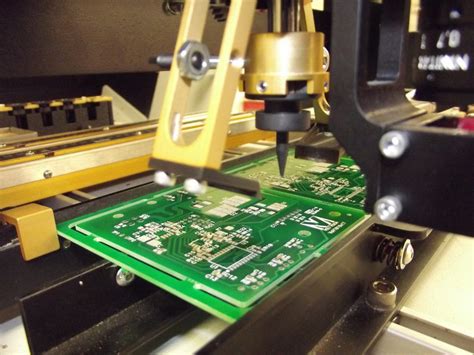
Soldering Methods for High-Quality Connections
Soldering is a critical aspect of pcb assembly, playing a vital role in establishing reliable electrical connections within a printed circuit board. The choice of soldering method can significantly impact the quality and performance of the final product. Among the most commonly used techniques are manual soldering, wave soldering, and reflow soldering. Each method has its own advantages and is selected based on specific project requirements.
Manual soldering is often employed for smaller production runs or for repairs, allowing for precise control over each connection. This method involves the use of a soldering iron to apply heat directly to both the component lead and the pcb assembly pad, facilitating the melting of solder to create a secure bond. It’s essential to maintain proper temperature settings and technique to avoid damaging components or the board itself.
Wave soldering, on the other hand, is typically used in mass production scenarios. This method involves passing assembled PCBs over a wave of molten solder, ensuring consistent coverage for all exposed connections. While this technique is efficient, it requires careful setup to prevent defects such as cold joints or bridging between traces.
Lastly, reflow soldering has gained popularity with surface mount technology (SMT) as it allows components to be placed directly onto the surface of a PCB before they are secured through heating. This method provides excellent control over temperature profiles, essential for ensuring that each pcba connection meets quality standards without overheating sensitive components.
Ultimately, mastering these various soldering methods is key for anyone involved in high-quality circuit production. Understanding when and how to apply these techniques can significantly enhance both the durability and performance of electronic devices. By focusing on achieving effective connections through proper soldering practices, you empower yourself in the world of pcb assembly, ensuring that your projects stand up to both testing and real-world applications.
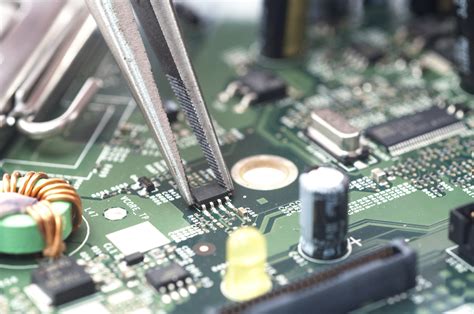
Common Challenges in PCB Assembly and Solutions
In the intricate realm of pcb assembly, various challenges can arise that may hinder the production of high-quality circuits. One primary issue is ensuring accurate component placement. Misalignment can lead to significant defects, impacting the overall functionality of the board. Utilizing advanced placement techniques can mitigate this challenge; employing precision machinery and verifying alignment through digital imaging ensures optimal results.
Another common hurdle is achieving strong and reliable solder joints. Poor soldering practices can result in cold joints or bridging, which compromises the integrity of the pcba. To address this, adopting effective soldering methods, such as wave or reflow soldering, is critical. Additionally, regular maintenance of soldering equipment will enhance performance and produce superior connections.
Moreover, managing static electricity is crucial during assembly to avoid damage to sensitive components. Implementing proper grounding techniques and using anti-static mats or wrist straps can provide effective protection against electrostatic discharge (ESD).
Lastly, ensuring quality control throughout the assembly process cannot be overstated. Regular inspection and testing phases help identify defects early, allowing for corrective measures to be taken swiftly. By understanding these common challenges in pcb assembly and implementing strategic solutions, manufacturers can significantly improve their assembly processes and produce reliable pcba products that meet industry standards.
Testing and Quality Assurance in PCB Assembly
In the realm of pcb assembly, rigorous testing and quality assurance processes are paramount to ensuring that each printed circuit board assembly (PCBA) meets the highest standards of functionality and reliability. Testing typically begins at the component level, ensuring that each element is functioning correctly before it is integrated into the larger assembly. Techniques such as in-circuit testing (ICT) and functional testing allow engineers to pinpoint issues early in the process, reducing the risk of defects in the final product.
Once assembled, a combination of visual inspections and automated tests can be employed to assess solder joints, connectivity, and overall circuit integrity. Implementing robust quality control measures not only guarantees high-quality connections but also enhances performance over the lifespan of the pcba. As technology continues to evolve, adopting advanced testing methodologies and adhering to industry standards will be crucial in maintaining efficiency and excellence throughout the pcb assembly process.
Future Trends in Board PCB Assembly
The landscape of pcb assembly is evolving rapidly, driven by advancements in technology and changing market demands. One of the most significant trends is the increasing integration of automation and robotics into the PCBA process. This shift not only enhances precision in component placement but also accelerates production times, making way for more efficient manufacturing cycles. Furthermore, the rise of smart factories, equipped with Internet of Things (IoT) capabilities, is transforming how pcb assembly operations are monitored and managed. Real-time data analytics can now provide insights into production processes, helping to identify inefficiencies and optimize workflows.
Another notable trend is the growing emphasis on sustainability within pcb assembly practices. As environmental awareness heightens, manufacturers are looking for ways to reduce waste and energy consumption during production. Emerging technologies that facilitate lead-free soldering and recyclable materials are gaining traction, ensuring that the future of PCBA not only meets quality standards but also aligns with eco-friendly practices.
Finally, as electronic devices become increasingly compact and complex, there is a push towards more advanced fabrication methods. Techniques such as 3D printing are being explored for rapid prototyping in pcb assembly, allowing designers to refine their products without lengthy lead times. This innovative approach enables a faster transition from concept to market while maintaining high standards for circuit performance. In summary, as the industry continues to adapt to these trends, staying informed about developments in pcb assembly will be crucial for anyone involved in electronics manufacturing.
Best Practices for Maintaining Equipment and Tools
To achieve stellar pcb assembly outcomes, maintaining equipment and tools is paramount. Regular maintenance not only extends the lifespan of your tools but also ensures consistent performance during the pcba process. Start by establishing a routine cleaning schedule for your soldering stations, pcb assembly fixtures, and inspection equipment. Using appropriate cleaning solutions will prevent residue build-up, which can affect accuracy and quality in circuit assembly. Additionally, it’s essential to calibrate machines periodically to ensure they operate within specified tolerances—this practice minimizes errors during component placement and soldering.
Moreover, using dedicated storage solutions for tools and components helps reduce the risk of damage or misplacement. A well-organized workstation enables quick access to necessary tools while ensuring precision in your pcb assembly tasks. Finally, always stay updated with the latest manufacturer’s guidelines for tool usage and maintenance; this will significantly aid in preventing operational delays that arise from malfunctioning equipment. By implementing these best practices, you can ensure that your pcba processes are not only efficient but also produce high-quality circuits that meet industry standards.
Conclusion
In summary, mastering pcb assembly techniques is crucial for the production of high-quality circuits. Embracing a systematic approach to pcba can significantly enhance the reliability and performance of electronic devices. Understanding the intricate dynamics of component placement not only optimizes space but also minimizes potential errors during assembly. Furthermore, employing proficient soldering methods is vital to ensure robust connections, which are fundamental for circuit functionality. Regularly addressing common challenges in pcb assembly, such as alignment and soldering defects, can lead to more efficient production processes. Ultimately, a commitment to continuous improvement and adherence to best practices in pcba will empower individuals and teams to produce superior electronic products consistently.
FAQs
What is PCB assembly?
PCB assembly refers to the process of soldering electronic components onto a printed circuit board (PCB) to create functional electronic devices.
What are the common types of PCB assembly?
The two main types are through-hole technology (THT) and surface mount technology (SMT). Each method has its own set of advantages depending on the application and design requirements.
How do I ensure high-quality PCBA?
To achieve high-quality PCBA, focus on precision in component placement, effective soldering methods, and thorough testing and quality assurance processes. Regular maintenance of tools also plays a crucial role.
What tools are essential for effective PCB assembly?
Key tools include soldering irons, tweezers, PCB holders, and inspection tools like magnifiers and microscopes. Having the right equipment helps ensure that your pcb assembly process runs smoothly.
What challenges might I face during PCB assembly?
Common challenges include misalignment during component placement, solder bridging, and thermal issues. Understanding these potential issues allows you to implement effective solutions ahead of time.
How do I test the assembled PCB for quality assurance?
Testing methods can include visual inspection, continuity testing, and functional testing to verify each connection. These steps are crucial in ensuring that your PCBA meets the required specifications.


